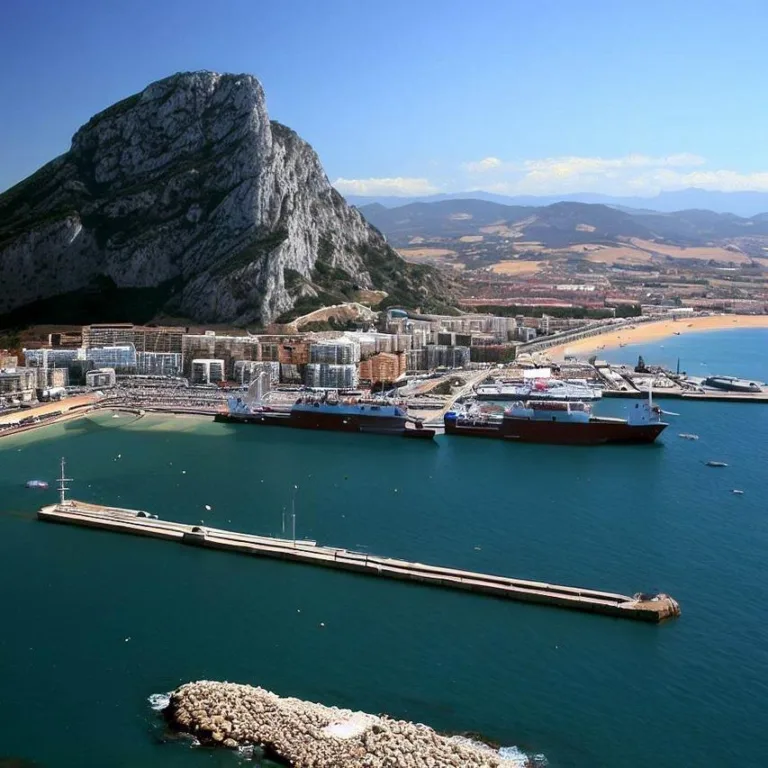Welcome to our comprehensive article about Gibraltar, the stunning peninsula that captivates travelers with its rich history, breathtaking landscapes, and unique cultural fusion. Situated at the crossroads of Europe and Africa, Gibraltar is a treasure trove of experiences waiting to be discovered.
The historical tapestry
Gibraltar’s history is a colorful tapestry woven with the threads of various civilizations. From the ancient Phoenicians and Romans to the Moors and Spanish, the Rock of Gibraltar has witnessed the rise and fall of empires. Its strategic location has made it a coveted possession for centuries, leading to a melting pot of cultures that defines Gibraltar’s identity today.
The British Influence
In 1704, Gibraltar was captured by Anglo-Dutch forces during the War of the Spanish Succession. Subsequently, it was ceded to Britain under the Treaty of Utrecht in 1713. The British influence remains palpable, with red telephone boxes and English-style pubs adorning the streets. The iconic Changing of the Guard ceremony at the Governor’s residence is a testament to Gibraltar’s enduring ties to the United Kingdom.
A natural wonder
Blessed with a diverse range of flora and fauna, Gibraltar is a nature lover’s paradise. The Upper Rock Nature Reserve is a haven for hikers and wildlife enthusiasts. As you ascend the limestone cliffs, you’ll encounter the famous Barbary macaques, the only wild primates in Europe. The views from the top are nothing short of spectacular, offering panoramic vistas of the Mediterranean Sea and the surrounding Spanish countryside.
The Pillars of Hercules
Gibraltar is often referred to as one of the Pillars of Hercules, flanking the entrance to the Mediterranean Sea. The other pillar is Jebel Musa in Morocco. According to Greek mythology, these pillars were created by Hercules as a symbol of his strength. Today, these ancient landmarks continue to inspire awe among visitors.
A cultural mosaic
Gibraltar’s unique blend of cultures is a testament to its historical significance as a crossroads of civilizations. The local population is a harmonious mix of British, Spanish, and Genoese influences. This fusion is most evident in the cuisine, where you can savor dishes that seamlessly combine flavors from across the Mediterranean.
The Multilingual Melting Pot
Gibraltar’s multicultural identity is reflected in its linguistic diversity. English is the official language, but Spanish is widely spoken. In fact, many Gibraltarians are fluent in both languages, showcasing their ability to bridge cultural divides. This linguistic versatility is a testament to the harmonious coexistence of different communities.
Faqs about gibraltar
Q: Is Gibraltar a British Overseas Territory?
Yes, Gibraltar is a British Overseas Territory. It has been under British sovereignty since 1713.
Q: Are the Barbary macaques in Gibraltar endangered?
No, the Barbary macaques of Gibraltar are not considered endangered. They are, however, a protected species and a beloved symbol of the region.
Q: Can I visit the Rock of Gibraltar?
Absolutely! The Rock of Gibraltar is a popular tourist destination with various guided tours and attractions, including the nature reserve and historical sites.
Q: How do I get to Gibraltar?
Gibraltar can be accessed by land through Spain or by air via Gibraltar International Airport. The airport’s unique runway intersects with a major road, requiring road traffic to stop during aircraft movements.
Q: What is the significance of the Pillars of Hercules?
The Pillars of Hercules are legendary landmarks that symbolize the western boundary of the known world in ancient times. Gibraltar and Jebel Musa in Morocco represent these pillars.
Experience the allure of Gibraltar’s history, nature, and cultural harmony for yourself. This enchanting destination promises a journey through time and culture, leaving an indelible mark on every traveler.
Viz také:






